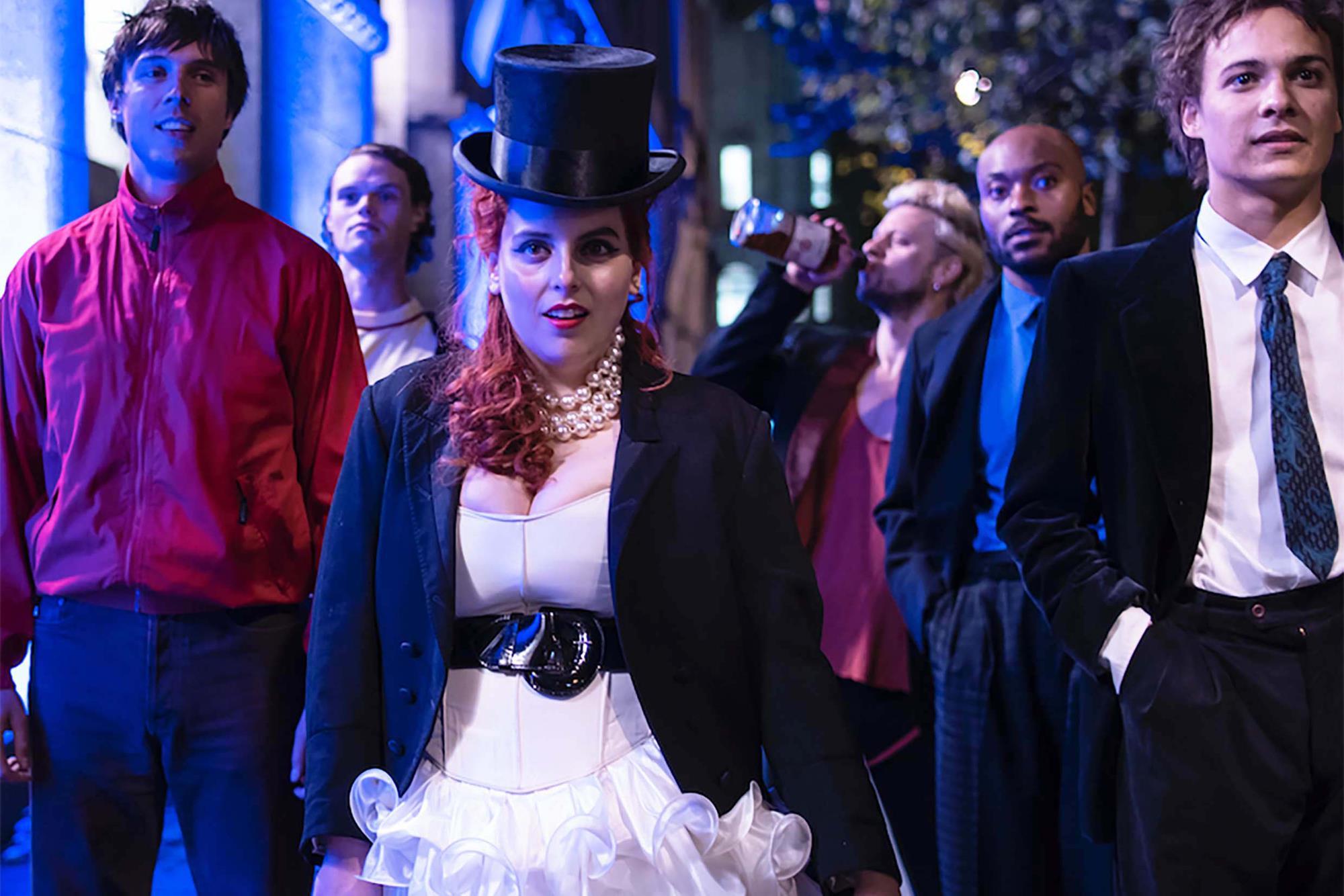Title: Oppenheimer
MPA Rating: R
Director: Christopher Nolan
Starring: Cillian Murphy, Emily Blunt, Robert Downey Jr
Runtime: 3 hrs
What It Is: The story of American scientist, J. Robert Oppenheimer, and his role in the development of the atomic bomb.
What We Think: From writer/director Christopher Nolan, Oppenheimer is as gargantuan and important of a film as its subject. Framed within unique 60mm film formats, accompanied by a sonorous sound design and score that shakes your skeleton, you have every reason to go see it on the biggest screen possible. And as engrossing as its technical aspects may be, it’s even more alluring how Nolan has crafted the story of whom he called “the most important man in history”, lacing history into an epic, horrifying, and cautionary tale.
Cillian Murphy dissolves into the role of J. Robert Oppenheimer completely, at times wearing his fedora like a crown or a crown of thorns, his piercing gaze gripping us, his face an ever evolving canvas from student, to scientist, to husband, to human. It’s a performance that lifts off any screen, no matter the size. Within Oppenheimer’s felt crown, there are studs and gems that shine brilliantly in the forms of the supporting cast. Emily Blunt is breathtaking in her role as Katherine Oppenheimer, her stormy eyes serving as a reflection of her and Oppenheimer’s relationship, and how what he undertakes changes their lives forever. Kenneth Branagh as Niels Bohr delivers some truly chilling lines about the precarious actions and discoveries Oppenheimer makes, almost like a wary whisper of what’s to come. Florence Pugh portrays Jean Tatlock, who, besides having an anomalous relationship with Oppenheimer, brings a clear sensitivity that pulls you to her – while Robert Downey Jr. as Lewis Strauss does the complete opposite, an incredible supporting performance of intensity and cruel, cold sternness. Every player here has an important role regardless of how much time they’re on screen, and I can’t help but mentioning those particular standouts that made my pulse quicken, even with the looming dread of the Trinity Project test – which, put to film, is one of the most incredible sequences I’ve had the pleasure of viewing in a theater.
Hoyte Van Hoytema’s cinematography is absolutely beautiful – his ability to capture faces (when considering that the entire film was shot on such a large format) is unparalleled, and still there are parallels drawn through simple things like raindrops. The black and white sequences are also brilliantly realized, serving as a objective look on the story opposite the subjective side shot in color. Due to the size of the film format, it makes these characters feel like giants and their eyes look like planets brimming with life. Leaves and dust particles speck the air like the sparks of a fuse. From these images it’s also clear that the production design had an insane amount of work put into it, from the period costumes to the locations themselves – The Los Alamos set was built entirely, as well as the 100 foot tower Oppenheimer scales to view his creation. It all feels so lived in onscreen, and it makes for a true spectacle in every sense of the word. Words fail to explain what Nolan achieves with practical effects here – but I think my feelings of awe viewing those accomplishments would suffice. And what better accompaniment to those sentiments, those frames, than Ludwig Göransson’s score? Quite simply, it mixes triumph with tragedy so well within its strings so that when victory occurs it soars, but the aftermath is composed of soul stirring melodies that will claw at your heart, searing the images into an amalgamation of wonderment and terror.
Our Grade: A+; The eruption of Oppenheimer’s sounds and visuals will echo in your mind – it’s pure technical filmmaking brilliance amongst outstanding performances and direction. One of the best motion pictures of the decade, no doubt.
